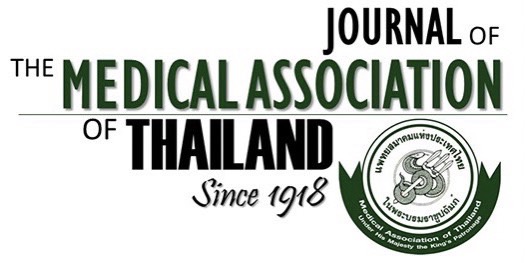Outcome of Maternal Syphilis at Rajavithi Hospital on Offsprings
Varaporn Sangtawesin MD*, Watcharee Lertsutthiwong MD*, Wiboon Kanjanapattanakul MD*, Meera Khorana MD*, Sunthorn Horpaopan MD*
Affiliation : * Neonatal Unit, Department of Pediatrics, Queen Sirikit National Institute of Child Health
Background : Syphilis remains an important sexually transmitted disease and continues to be an important
problem in Thailand. Despite the clinical efficiency of penicillin in the treatment of pregnant patients with
syphilis, infants with congenital syphilis are still encountered. Congenital syphilis poses significant chal-
lenges for the clinician because infants may be asymptomatic at birth or present with a highly variable
clinical picture.
Objectives : To evaluate the outcomes of neonates born to syphilitic mothers, the efficacy of antepartum treat-
ment in the prevention of congenital syphilis and treatment for congenital syphilis after delivery.
Materials and Methods : The surveillance conducted from September 1st, 2002 to December 31st, 2003, involved
63 mothers who were diagnosed with syphilis and their offsprings at Rajavithi Hospital, Bangkok, Thailand.
Sixty-four infants had complete physical examination, growth, development and laboratory evaluation at
Queen Sirikit National Institute of Child Health at the time of delivery and at the ages of 1, 2, 4 and 6 months.
Results :There were 63 mothers and 64 infants recruited in the present study. Fifty-three mothers had prenatal
care (84.13%). The VDRL was positive in the first prenatal care visit in 42 mothers (66.67%) and 11 moth-
ers(17.46%) had seroconversion later on. Maternal treatment for syphilis included adequate penicillin 23
cases (36.51%), inadequate penicillin 5 cases (7.94%), erythromycin 9 cases (14.29%) and 26 mothers
(41.27%) received no treatment at all. The mean maternal age, mean gestation age at treatment for syphilis
and at delivery were 30.31 + 5.60 years, 32.75 + 6.73 weeks and 38.60 + 1.57 weeks respectively. Failure rate
in the adequate penicillin group was 8.7%. The mean birth weight of the 64 infants was 3034 + 495 grams, no
syphilitic stillbirth occurred. Nine infants (14.06%) were identified with presumptive congenital syphilis. The
manifestation include hepatomegaly (55.56%), desquamation of palms and soles (44.44%), radiological
changes (33.33%) and abnormal cerebrospinal fluid (25%). The fluorescent treponemal antibody absorption
immunoglobulin M (FTA-ABS IgM) tests of the infants were positive in 2 out of 9 cases (22.22%). The range of
maternal and neonatal VDRL titer were between weakly reactive to 1:32 and nonreactive to 1:32 respectively.
Fifty infants (78.13%) including 9 presumptive cases were followed-up, all had normal growth. Thirty-four
infants (68%) who had re-evaluation for VDRL titers, were seronegative.
Conclusion : Penicillin is the effective treatment of pregnant patients with syphilis and infants with congenital
syphilis. The high risk of congenital syphilis correlates with untreated mothers and inadequate maternal
syphilis treatment.
Keywords : Neonatal outcome in syphilitic mother



